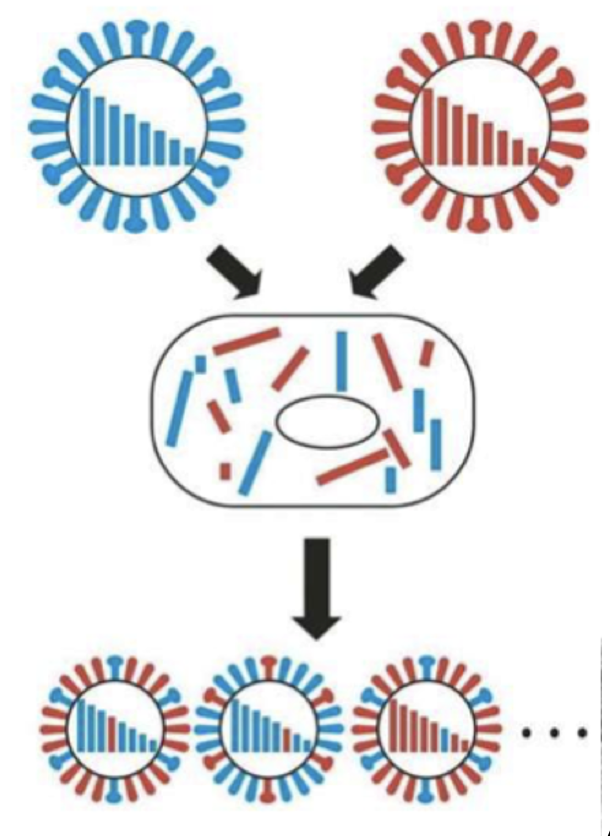Thursday, January 13th, 2022...9:54 pm
All About Viruses
By Da Beattie
It’s coming up on two whole years of being in a pandemic, and some people are still confused as to what a virus is. Whether you are a non-science student, or my family members, this general post aims to tackle the basics. What is a virus?
Viruses are parasites that can multiply only in living cells and rely on host processes to reproduce. Thus, are deemed “non-living”. The simplest viruses are named viroids, which are circular single-stranded RNAs of plants. Other simple viruses include prions. Prions are normally expressed proteins that when their structure becomes altered, the misfolded protein induces proper protein to misfold and aggregate. The individual prion proteins that are misfolded can act as seeds for infectious spread. The most known example of human prion infection is the laughing death, Kuru, which arose due to ritualistic cannibalism.
Viruses follow general rules with exceptions that this article will not cover. All viruses have a genome. This can be RNA or DNA. Single-stranded or double-stranded. Negative or positive sense. And while you might not know what all these terms mean, the general idea is that like living organisms, there is significant diversity. Unlike living organisms, larger viruses have larger genomes.
Viruses also have a capsid, which is like a shell of protection made up of protein. Some viruses may be enveloped, which is the term for viruses covered by a lipid bilayer.
Although viruses are given a bad rep, especially now during a pandemic, many viruses do not cause harm. Opportunistic infections only cause harm in immunocompromised individuals. In fact, some viruses have evolved to be a part of the human genome. The protein Syncitin-1 comes from an endogenous human retrovirus that is responsible for the fusion of cells forming the placenta, which suggests that infection of a virus in the past allowed the evolution from an egg laying species to a placental species.
Now that the basics are covered, you probably want to know, what are coronaviruses?
Coronaviruses are positive strand RNA viruses. Compared to negative strand viruses, positive strand viruses can be directly translated to make proteins. Like many viruses including influenza, bats are the reservoir for coronaviruses. Coronaviruses are enveloped viruses that produce subgenomic RNAs through discontinuous extension/template switching. A complicated process in which the details are not relevant for a general understanding of viruses.
There are three main ways in which viruses may mutate and generate diversity. Antigenic drift is the term for point mutations. Antigenic shift is the term for when segmented viruses reassort their segments. And recombination is the term for interactions between two segments. Although coronaviruses are not segmented and cannot undergo antigenic shift, they can generate diversity through recombination.

So, if you have made it past the science dump and are still reading you might be wondering, how many more variants will occur before the pandemic becomes a seasonal flu situation? The answer is, I don’t know. But leave it up to your imagination and the possibilities are endless.
Source:
MGY378, Microbiology II: Viruses. Department of Molecular Genetics and Microbiology, University of Toronto Winter 2021.
Leave a Reply